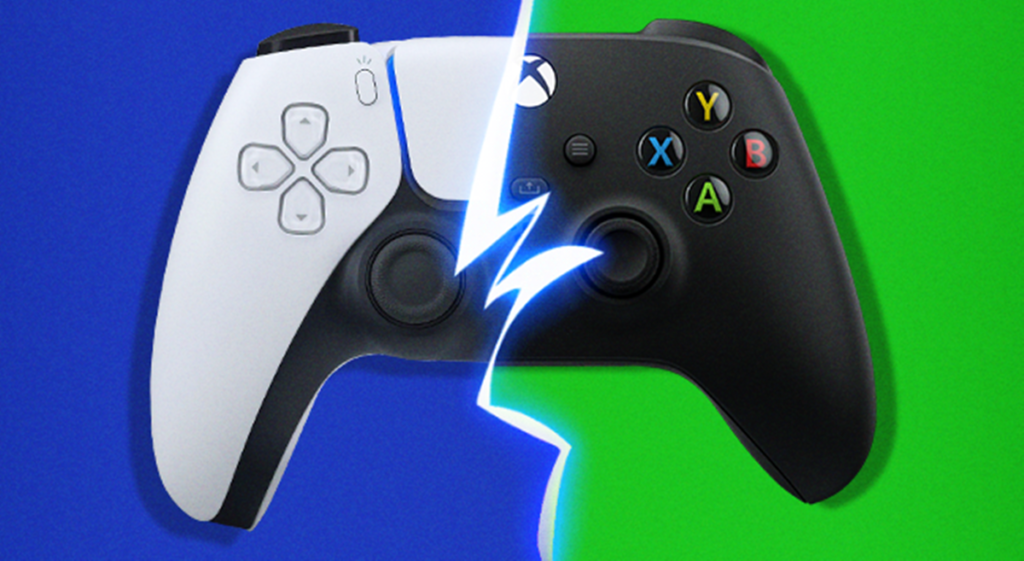Choosing the Right Console Development Platform (PS5 vs. Xbox Series X vs. Nintendo Switch)
The world of console game development is a thrilling landscape brimming with creative potential. But before you unleash your coding prowess and sculpt your dream game, a critical first step awaits: selecting the ideal console development platform. The three dominant players in the arena – PlayStation 5 (PS5), Xbox Series X (Xbox Series X), and Nintendo Switch – each boast unique strengths, target distinct audiences, and necessitate specific development considerations. This comprehensive guide equips you with the knowledge to navigate this crucial decision and propel your console game development journey forward.
The Booming Console Game Market: The global console game market is projected to reach a staggering $50.35 billion by 2024 [1]. This immense growth underscores the vast potential and diverse landscape that console gaming offers for developers.
Key Factors for Choosing Your Platform:
-
Target Audience: Aligning your game with the right audience is paramount. Here’s a breakdown of each console’s typical player base:
-
PlayStation 5: PS5 attracts core gamers who prioritize cutting-edge visuals and immersive experiences. It boasts high-fidelity graphics and powerful hardware, making it a haven for games that push graphical boundaries.
-
Xbox Series X: Xbox Series X strikes a balance between raw processing power and affordability. This appeals to a broad audience that appreciates high-performance gaming without a hefty price tag. The Xbox Game Pass subscription service further expands its reach, offering players access to a vast library of games.
-
Nintendo Switch: The Switch thrives on its unique blend of console and portable gaming. This flexibility caters to a wide demographic, encompassing families, casual gamers, and fans of Nintendo’s iconic franchises like Mario and Zelda.
-
-
Hardware Capabilities: The technical muscle of each console directly impacts the type of games you can develop. Here’s a closer look:
-
PlayStation 5: PS5 boasts a custom CPU and GPU architecture specifically designed for high-end gaming. This translates to stunning 4K visuals and even support for 8K resolution in some games. Its innovative DualSense controller features haptic feedback and adaptive triggers, creating a more realistic and immersive gameplay experience.
-
Xbox Series X: Xbox Series X packs a powerful punch with its processing capabilities. The innovative Velocity Architecture optimizes storage and memory usage, leading to faster loading times and smoother gameplay.
-
Nintendo Switch: While not aiming for the absolute highest graphical fidelity, the Switch prioritizes portability and innovation. Its detachable Joy-Con controllers enable creative multiplayer experiences, perfect for party games or cooperative adventures.
-
-
Development Tools and Middleware: The availability of development tools and middleware significantly impacts your workflow. Here’s a platform-by-platform breakdown:
-
PlayStation 5: Sony provides a comprehensive set of development tools specifically designed to streamline PS5 development. Popular middleware solutions like Unreal Engine and Unity also offer robust support for PS5, giving developers access to powerful creation tools.
-
Xbox Series X: Microsoft boasts well-established and user-friendly development tools. Xbox Series X leverages many of the same tools and middleware as Xbox One, ensuring a smoother transition for experienced developers already familiar with the Xbox ecosystem.
-
Nintendo Switch: Nintendo offers its own set of development tools tailored for the Switch’s unique hardware and features. Popular middleware solutions might require additional adaptations for optimal performance on the Switch due to its distinct hardware architecture.
-
-
Development Costs and Ease of Use: Budget and development complexity are crucial factors to consider:
-
PlayStation 5: Development costs for PS5 can be higher due to its advanced hardware and the potential need for additional development kits. However, Sony offers various resources and support programs to assist developers.
-
Xbox Series X: Microsoft’s established development tools and familiarity with the Xbox ecosystem can make Xbox Series X development potentially more cost-effective and user-friendly, especially for seasoned Xbox developers.
-
Nintendo Switch: Development costs for the Switch might be more moderate compared to PS5 and Xbox Series X. However, optimizing games for both docked and handheld modes can add complexity to the development process, potentially requiring additional development time and resources.
-
-
Development Philosophies and Online Services: Understanding how each console fosters game creation and online interaction is important:
-
PlayStation 5: Sony focuses on delivering high-quality, single-player experiences alongside strong online multiplayer offerings like PlayStation Plus. This platform prioritizes immersive, story-driven games and competitive online experiences.
-
Xbox Series X: Microsoft prioritizes backward compatibility, allowing players to enjoy games from previous generations of Xbox consoles. They also offer a robust online ecosystem with Xbox Game Pass, a subscription service granting access to a vast library of games.
-
Conclusion: Choosing Your Console Development Platform
Ultimately, the ideal console development platform for your project hinges on a careful analysis of several key factors. Consider your target audience, the desired gameplay features you envision, your development budget, and your team’s expertise.
Matching Your Project Vision:
-
High-Fidelity, Immersive Experiences: If your game prioritizes cutting-edge visuals, powerful hardware, and a focus on core gamers, then PlayStation 5 might be the perfect fit.
-
Balancing Power and Affordability: For a broad audience appeal, affordability, and a robust online ecosystem with subscription service options, Xbox Series X could be the ideal choice.
-
Portable Innovation and Family Fun: If your game thrives on innovation, portability, and caters to families and casual gamers, the Nintendo Switch presents a fantastic platform.
Remember, There’s No Single “Best” Platform:
The beauty of the console game development landscape lies in its diversity. There’s no single “best” platform – the key lies in carefully analyzing your project’s goals and selecting the console that best aligns with your vision and development capabilities.
Additional Tips for Aspiring Developers:
-
Research Each Platform Thoroughly: Devote time to researching each console’s technical specifications, development tools, and online resources.
-
Consider Development Time and Resources: Be realistic about your development team’s size, experience, and budget constraints when choosing a platform.
-
Explore Cross-Platform Development Options: If your game concept allows, investigate the possibility of developing for multiple consoles to reach a wider audience.
-
Stay Updated on the Evolving Landscape: The console game development landscape is constantly evolving. Stay informed about upcoming hardware upgrades, software advancements, and industry trends to make informed decisions.
By carefully considering these factors and conducting thorough research, you can embark on a successful console game development journey. With the right platform as your foundation, you can bring your creative vision to life and captivate players on a global scale!





